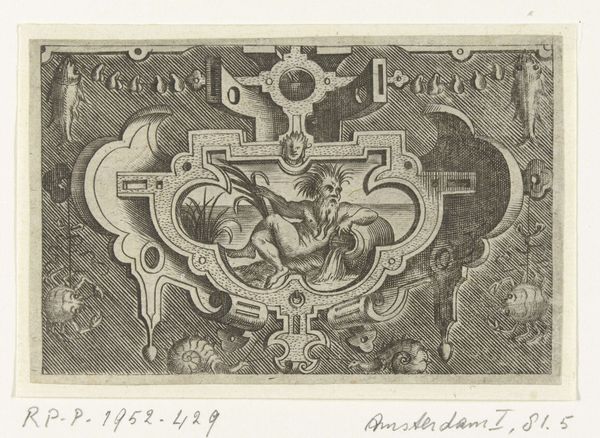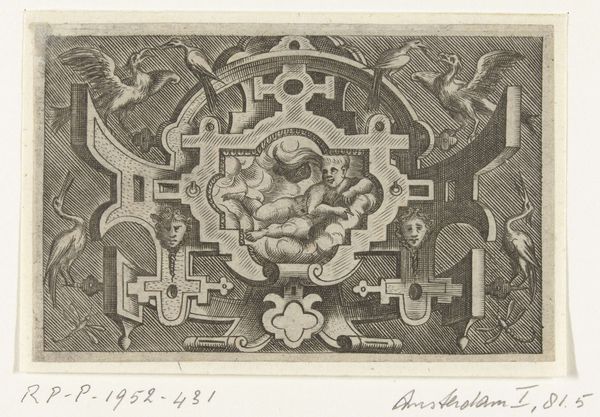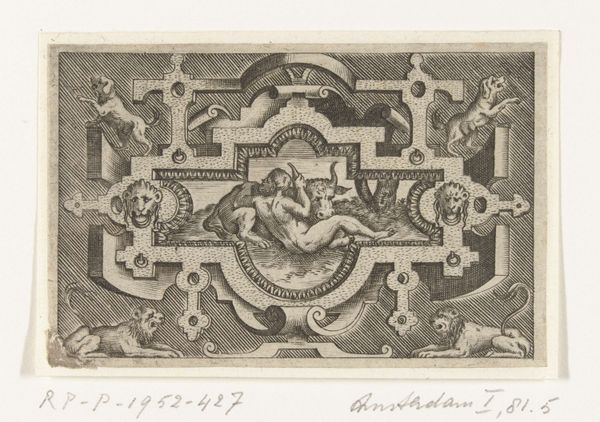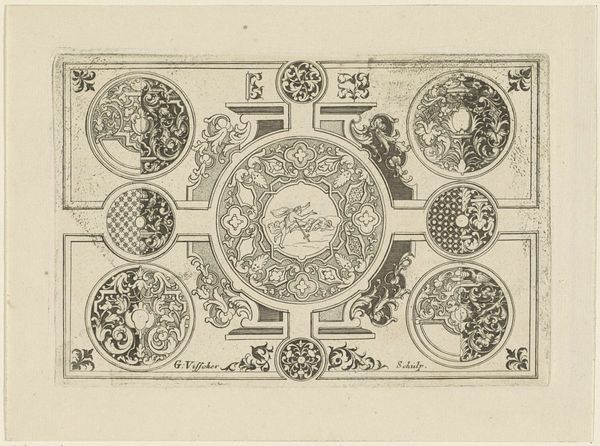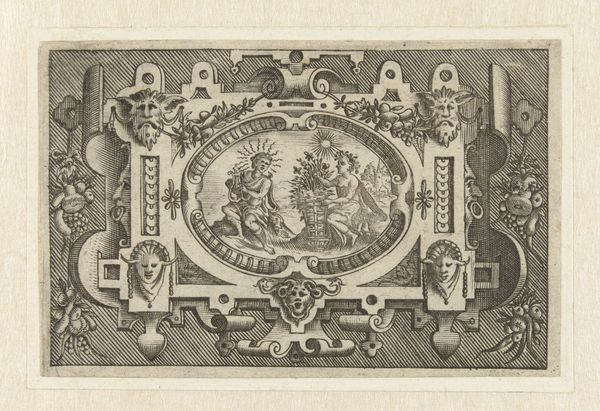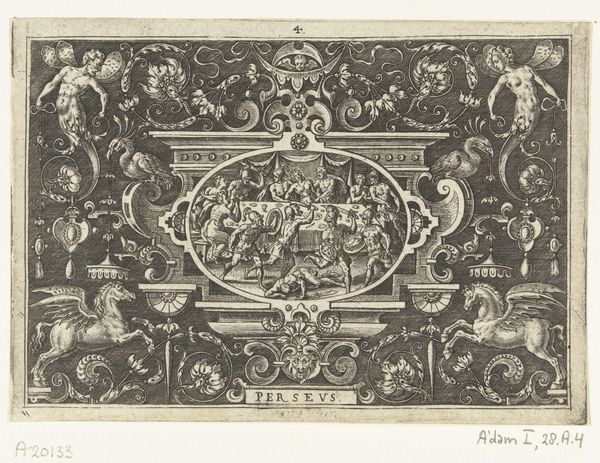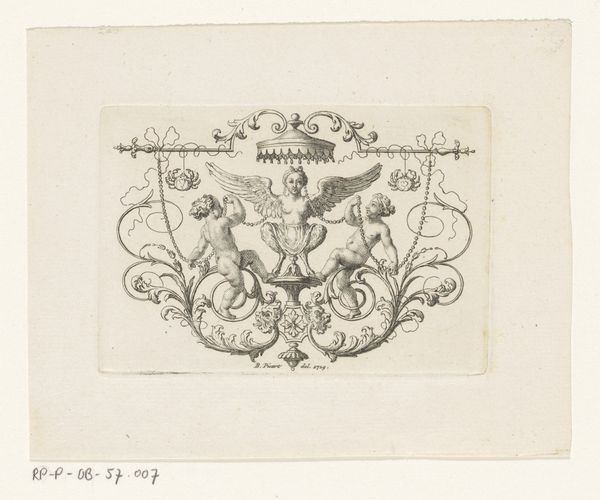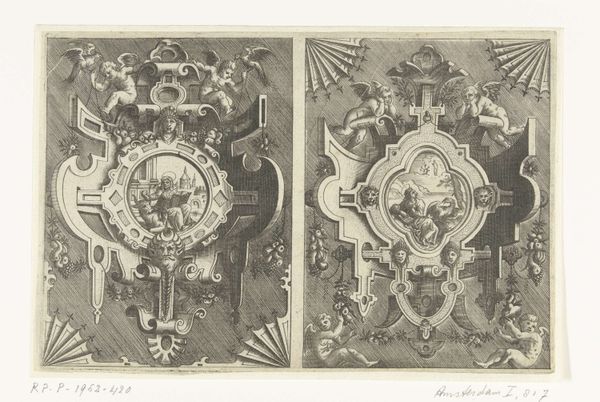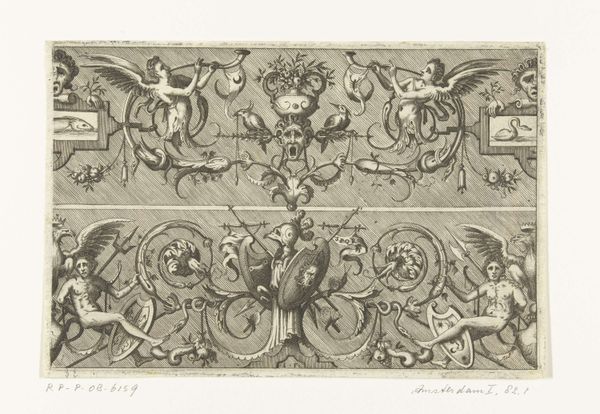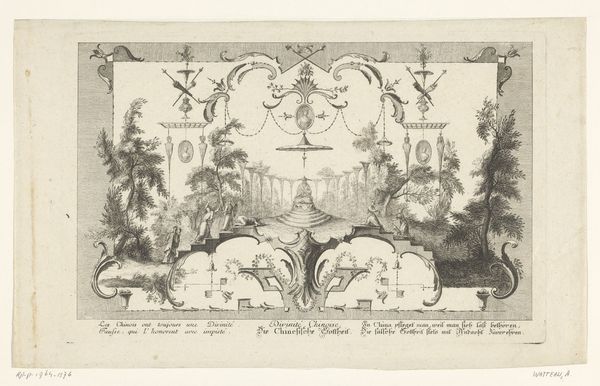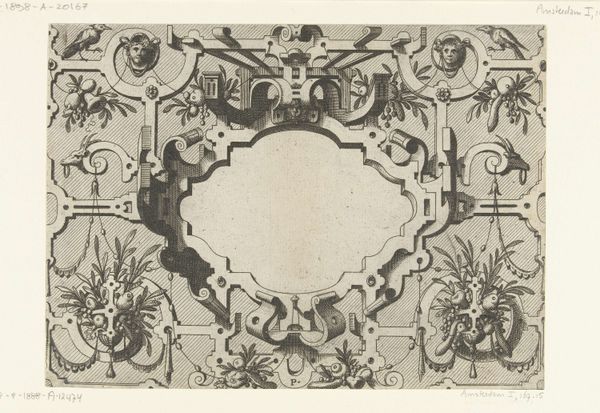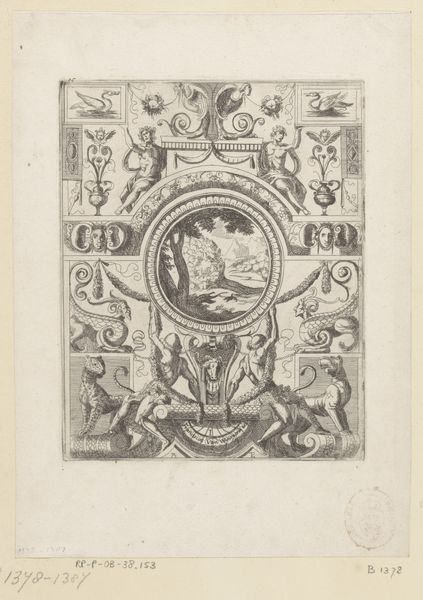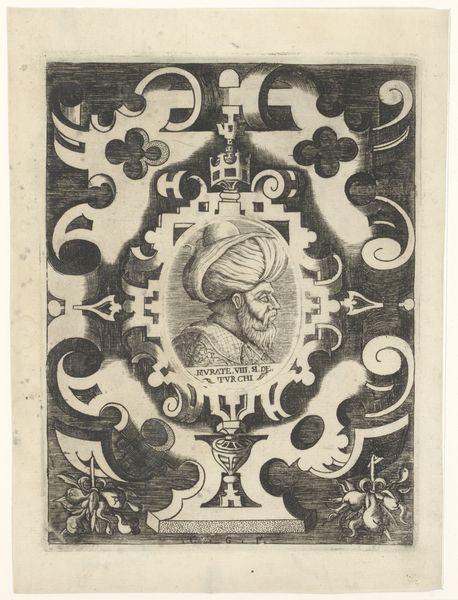
print, engraving
#
allegory
# print
#
old engraving style
#
landscape
#
figuration
#
history-painting
#
northern-renaissance
#
engraving
Dimensions: height 67 mm, width 102 mm
Copyright: Rijks Museum: Open Domain
Editor: So, this is "Winter," an engraving from 1566 by Pieter van der Heyden, housed at the Rijksmuseum. It strikes me as quite rigid in its composition, yet there’s something deeply symbolic happening in the small scene depicted in the center. What do you see in this piece? Curator: It's a fascinating arrangement, isn't it? I see a careful deployment of cultural memory. Winter isn’t just a season; it’s a symbol loaded with meaning. The barren trees in the backdrop speak of dormancy and seeming death, themes resonating with a society intimately tied to agricultural cycles and perhaps societal anxieties of the time. Editor: Right, there's almost a visual tension there between the ornamentation around the frame and what's going on in the center vignette. Is there a meaning behind these visual contrasts? Curator: Precisely! The frame teems with motifs—grotesques and fruits—suggesting abundance, juxtaposed with the apparent scarcity of the winter scene. Consider the two figures. We have one figure holding a key which suggests a governing agent, while the other sits slumped and in quiet distress. Think about what the key might signify culturally: authority, control, access... or perhaps, something being locked away. Editor: That’s compelling! The key implies agency. Maybe “Winter” here has control or possesses the ability to alleviate hardship? Curator: That’s a good starting point for consideration, which connects the key to more expansive understandings. Could the frame itself act as a kind of gilded cage? Consider how often wealth and adornment act to hide the suffering it masks. Editor: I never thought about the frame in that way before. So, there’s this dialogue between suffering and potential reprieve embedded in the print? Curator: Precisely. And that kind of symbolic interplay is central to how people made sense of their world and expressed themselves within it. We must ask why such symbols were created. Editor: Thanks, that gives me a lot to think about – the symbols, yes, and also what the original purpose might be!
Comments
No comments
Be the first to comment and join the conversation on the ultimate creative platform.
